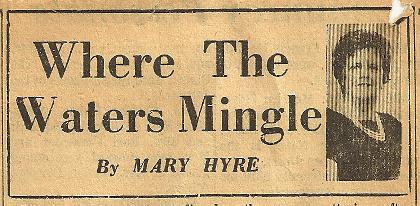 The best journalists are those who are both skilled reporters (able to dig out information, develop trusted sources and persist until the story is complete) and capable writers (able to turn facts into prose that people will read with pleasure and understanding). Not all journalists, as I noticed during my more than 40 years in the business, possess both skill sets in equal measure. Some are better reporters than writers; others are better writers than reporters. Too introverted to be a first-rate reporter, I always considered myself more of a writer.
The best journalists are those who are both skilled reporters (able to dig out information, develop trusted sources and persist until the story is complete) and capable writers (able to turn facts into prose that people will read with pleasure and understanding). Not all journalists, as I noticed during my more than 40 years in the business, possess both skill sets in equal measure. Some are better reporters than writers; others are better writers than reporters. Too introverted to be a first-rate reporter, I always considered myself more of a writer.At a Chautauqua performance in Ashland, Ohio, last week I heard Karen Vuranch perform as Hollywood gossip columnist Louella Parsons. "I don't care about grammar," Parsons said during the presentation. "I care about the story." She was a reporter. She got scoop after scoop. Getting the story and getting it first was what mattered to her, not grammar nor even proper word choices. She called herself "Mrs. Malaprop." William Randolph Hearst ordered his editors not to edit his star reporter, so her Malaprops, poor grammar and misspellings often made it into print. She didn't care as long as her facts were right.
 When. fresh out of college, I worked for The Messenger in Athens, Ohio, back in the 1960s, and one of my colleagues was a middle-aged woman in Point Pleasant, W.Va., named Mary Hyre. She was an atrocious writer, and when her stories came through those of us in the newsroom would often read aloud some of her sentences and get a good laugh. It was my job to turn her jumbled stories into something printable. I still have a box full of Mary's original copy that I sometimes look through with amusement. Yet she seemed to know everyone in Point Pleasant, and there wasn't much that happened in that town that she didn't know about. She could cover the big stories (like the Silver Bridge disaster and the infamous Mothman sightings that they made a movie about a few years ago) and events like bake sales with equal enthusiasm. I may have been a J-school graduate who knew how to write a decent sentence, but I had no doubts about which of us was the more valuable Messenger employee. I would have been easy to replace, as I was within two years, but finding another Mary Hyre would have been difficult.
When. fresh out of college, I worked for The Messenger in Athens, Ohio, back in the 1960s, and one of my colleagues was a middle-aged woman in Point Pleasant, W.Va., named Mary Hyre. She was an atrocious writer, and when her stories came through those of us in the newsroom would often read aloud some of her sentences and get a good laugh. It was my job to turn her jumbled stories into something printable. I still have a box full of Mary's original copy that I sometimes look through with amusement. Yet she seemed to know everyone in Point Pleasant, and there wasn't much that happened in that town that she didn't know about. She could cover the big stories (like the Silver Bridge disaster and the infamous Mothman sightings that they made a movie about a few years ago) and events like bake sales with equal enthusiasm. I may have been a J-school graduate who knew how to write a decent sentence, but I had no doubts about which of us was the more valuable Messenger employee. I would have been easy to replace, as I was within two years, but finding another Mary Hyre would have been difficult.Some journalists fall at the other extreme. Mark Twain was like that. He got his start working for a newspaper, but his stories often turned out to be fanciful. Many of these stories, such as The Celebrated Jumping Frog of Calaveras County, are still read today. He was a writer, not a reporter.
Joe Eszterhas and I were both freshmen when we started working together on The Post, the Ohio University student newspaper, on the same day in the fall of 1962. He went on to become editor. I remained a reporter. Joe's long and richly detailed stories drew a lot of attention, but he was one of many reporters about whom it has been said that "he never let the facts get in the way of a good story." He worked briefly for The Plain Dealer in his hometown of Cleveland, where inaccuracies in a story he wrote about that same Silver Bridge collapse led to a U.S. Supreme Court decision against him and The Plain Dealer. After a stint at Rolling Stone, Joe, like Louella Parsons, ended up in Hollywood. He put his vivid imagination to work on screenplays for such movies as F.I.S.T., Jagged Edge, Flashdance, Basic Instinct and Showgirls.
The best journalists may be those who are both good writers and good reporters, but Louella Parsons, Mary Hyre, Mark Twain and Joe Eszterhas are all testimony to the fact that one can be mostly one or the other and still find success.
No comments:
Post a Comment